At an owners meeting back in January, Bruce Landon, a long-time executive with the Springfield Falcons and part of that ownership team, said that if the AHL affiliate didnt boost season sales by roughly half the then-total of 1,100, then owners would have to consider all options up to and including selling the club. That preliminary goal has been realized, but much work remains to drive up attendance for the 72-year-old franchise and thus secure a solid future in the City of Homes.
Bruce Landon calls it the war room.
Thats a colloquialism for the conference area within the Springfield Falcons Hockey Clubs office complex at the MassMutual Center. There, along one wall, are two giant white boards that are now covered by expansive charts with information on all 40 home games for the 2008-09 season, which Landon describes as a very important season for the franchise.
These charts list the date, day, opponent, and a host of other data on each game from the corporate sponsor for the tilt in question to the theme for that contest to the individual or group scheduled to sing the national anthem. Falcons officials have been working diligently to fill in these boxes since the day the schedule was announced in July, and they have a lot of work ahead of them.
Eight of the contests are marked in red, explained Landon, president, general manager, and part-owner of the franchise, because they have been identified as big games potentially, as far as the standings are concerned, but definitely, in terms of possible turnout and thus revenues. These are weekend games for the most part the exception being the last game of the year, on a Wednesday against what would be considered traditional and geographical rivals, especially the Hartford Wolfpack and the Providence Bruins.
These are the A games, Landon told BusinessWest. These are the ones weve identified as being key for us in terms of getting big crowds out, and we do everything we can to make the most of these dates.
Maximizing the return from these A games is just one component of a multi-faceted strategy to boost attendance for the American Hockey League franchise, which can trace its roots in Springfield to 1936, but probably wont have much of a future in the City of Home unless those numbers rise from the current 3,600 or per game to something closer to 4,600, minimum.
This was the essence of a blunt message that Landon, whos been part of this franchise as a player and executive for most of the past 40 years, left with other members of the ownership group, as well as the media, at and following a meeting last January, during which he threw down a gauntlet of sorts regarding season-ticket subscriptions and the critical need to drive up volume.
I wasnt trying to put fear in anyone, he said of that meeting, at which he said that, if the team failed to gain another 500 season tickets by June, then ownership would have to consider a host of options, including selling the club. I was just trying to get my point across that this is a business, one that cant keep losing money.
Apparently, he made his point. Indeed, season-ticket sales climbed from about 1,100, one of the poorest totals in the league, to beyond 1,600 (the initial threshold) by early summer thanks in part to efforts within the business community and theyre inching closer toward the more ambitious goal of 1,800.
But season-ticket sales are just one part of the equation in the larger effort to boost attendance to that 4,500 level or, hopefully, much higher, he continued, adding that group sales and day-of-game purchases are also critical to hitting the number. Bringing attendance up will require a good on-ice product something thats been mostly lacking in recent years (the team hasnt made the playoffs since 2003) but also some effective marketing, a little help from the economy, perhaps, and even some luck.
Lets see if we can avoid the snowstorms on Friday and Saturday nights, or even forecasts of snow, said Landon, adding that the latter can be nearly as impactful as the former.
Overall, Landon knows that what he wants to accomplish with attendance is doable. Thats because hes done it before: he led efforts to resurrect hockey in Springfield after the city lost its AHL franshise for a short time in the early 90s. He and partner Wayne LaChance were awarded a team, eventually named the Falcons, in 1994, and the partners succeeded in steadily drawing more than 5,000 fans to the old Springfield Civic Center.
Duplicating that feat will come down to generating and then holding greater interest in the team in whatever ways that can be accomplished, said Landon, who recently inked a new three-year contract as president and general manager. He noted that the AHL product is good, but it seems that fans, especially in this market, need to be constantly reminded of that.
This is the second-best hockey league in the world, he said. And what we want to stress is that people can see the stars of tomorrow at prices they can afford today.
Being Goal-oriented
As he talked about the Falcons, the teams rich history, its past success (six Calder Cups, including two in the early 90s), and the challenges ahead, Landon summoned, in his mind, a news clipping from a game he played as a goalie for what were known then as the Springfield Kings. (The team was called the Indians at the start, then the Kings, then the Indians again, and finally the Falcons, starting in 1995.)
It was 1969, he recalled, adding that he remembers the story noting that he had a big game and helped lead the Kings to a win before a crowd of 3,800 loyal fans.
That was on opening night, a Saturday, he continued, adding that he summoned that moment from his youth and perhaps the teams high-water mark in terms of success and popularity to make a few points. First, the fact that, despite some perceptions to the contrary, the teams attendance wasnt much, if any, higher nearly 40 years ago, when it played in the Coliseum at the Big E, than it is today, and second, that while a team could survive and thrive with that kind of attendance back then, it cant today.
Not with the expenses that we face these days the days of surviving in the American Hockey League on 3,600 or 3,800 fans are over, he said, noting everything from travel (the league is much bigger geographically than it was then) to facilities to a large portion of the parking tab for each vehicle. It is simple mathematics driving the current push for higher attendance, Landon continued, noting that many teams in the league are averaging more than 5,000 per game, and Springfield must join that club to compete effectively and enable a dedicated ownership group to use black, not red, ink when logging season-ending financials.
This was the point Landon said he was trying to drive home at that January owners meeting and after it ended.
I looked at the numbers, and they showed that we do pretty well in group sales, we do a lot of promotional things to entertain the fans, and we have a quality league and a good team, he said. But the bottom line was that we just didnt have a big-enough season-ticket base.
He knew that the gold standard (5,000 season tickets) set by the leagues oldest and, by most accounts, most successful, franchise, the Hershey (Pa.) Bears, was not attainable in a market only 90 minutes from Boston and NHL hockey. But he thought the team could match or approach the numbers (2,000 to 2,200) amassed by some similarly sized communities such as Syracuse and Binghampton, N.Y. and Portland, Maine.
We knew we had to get that season-ticket base up to 1,600 or 1,700 to have a fighting chance, he said, adding that what emerged from that January meeting was a much-needed sense of urgency that has manifested itself in concerted efforts from city leaders and the business community to help the club boost season-ticket sales.
Weve had a lot of people rally behind us the media, the fans, and the businesses of the Western Mass. area, said Landon, noting that Springfield Mayor Domenic Sarno, among others, called area business owners seeking support for the franchise in many forms, but especially season-ticket subscriptions. Merrill Lynch bought 60 to kick off the campaign, and it just snow-balled from there. And it wasnt just the corporate sector
individuals stepped up. The spark came from many different areas, and it was refreshing to see.
But considerable work remains, said Landon, noting quickly that a larger season-ticket base will help the team meet its higher attendance goals, but it is only part of the equation.
Win-win Situation
And this point brings him back to the war room, those white boards, and ongoing efforts to fill in the grid with corporate sponsors, pre-game activities, special promotions, anthem singers, and everything else that goes into making a game successful from a revenue standpoint.
Each of the 40 home contests is important, noted Landon, although some those A games especially obviously have more potential, revenue-wise, than others. Maximizing each contest is an all-consuming exercise, he said, involving staff members and a number of interns enrolled in sports-management programs at area colleges and universities.
We gather here (the war room) on Friday afternoons its a little slow in the off-season and we brainstorm about everything, he said, adding that there are more-formal gatherings on Tuesday mornings. The assignment is to look at every game whether its a Saturday-night tilt against Hartford, a late-Sunday-afternoon contest against Portland, or a Wednesday-night encounter early in January against Binghampton and find ways to put fannies in the seats.
Its frustrating in some ways, he said. Too many people think that they have to drive to Boston and spend $400 to see good hockey. They dont they can see it right here; a family of four can attend a game here for $50. We just need to show people how good the product is, and to that, we have to get them out to see the Falcons.
To that end, the club works to create value, said Landon, adding that this comes in many forms, from giveaways of backpacks on school nights, providing individuals or school choruses an opportunity to sing The Star Spangled Banner, to bringing in attractions such as Red Sox mascot Wally the Green Monster. For games like the 1 p.m. matinee on New Years Eve against Hershey, the staff members will stretch their collective imaginations to make the most of what is an opportunity but also a challenge.
Creating value doesnt exactly substitute for a lack of on-ice success, said Landon, but it does help, and all teams must contend with factors that are, for the most part, out of their control.
These include injuries which eventually doomed the 2007-08 Falcons, a team that started strong and was in the playoff hunt until the final week but also parent clubs short on young talent (this describes the Tampa Bay Lightning, the Falcons former parent), the lengthy renovations to the Civic Center a few years ago, which prompted some to think the arena was closed, and even the weather and forecasts of same.
To overcome all that, the Falcons, like all teams, strive to provide a great experience for fans, and this explains all the hard work in the war room.
This is also the motivation behind the Perch, a new seating area for groups that was opened last year to solid reviews. It seats roughly 50, comes complete with HD televisions, and enables groups to cater in whatever menu they like.
The Latino Chamber of Commerce had it for a game and loved it, said Landon, adding that the Perch was rented by 15 groups and businesses last year, and the goal is to have it used for all 40 home games this year. It gives businesses and organizations a great opportunity to thank and entertain clients, employees, and family.
Filling the Perch and as many of the 6,600 seats at the MassMutual Center as possible, including full and effective use of those season tickets, leads to other forms of revenue generation, said Landon, including concessions and program sales.
Everything comes back to putting people in the seats, he noted, adding that to do so the team will focus on promotions, create that all-important value, hope for a winning team, and also stress the tradition of hockey in Springfield and the quality of the on-ice talent.
Thus some marketing efforts, still being finalized, will feature stories about such former Springfield stars as Manny Legace, a goalie now with the St. Louis Blues; Danny Briere, now one of the leading scorers with the Philadelphia Flyers; and Robert Esche, a former NHL star now playing in Russia.
We want to get a little edgier with our marketing and sell the history of hockey here since 1936, he told BusinessWest. We want to talk about the great players you can see right here in your own backyard.
Were going to have a radio campaign featuring fans of all ages talking about their favorite players here, he continued. We want to stress that theres a tremendous tradition of hockey here and fantastic hockey being played in Springfield.
Net Results
As he waved his hand across the charts in the war room, Landon said the boxes are steadily being filled in, especially for those A games Dec. 27 against Hartford, Jan. 24 against Providence, and Feb. 20 against Worcester among them.
There has been some progress as well with the so-called B games, other weekend tilts against the likes of Manchester, Philadelphia, Lowell, Toronto, and Albany, among others, and even with those challenging weekday games, such as the Tuesday contest in mid-February against Portland.
Were getting there, but theres still a lot of work of do, said Landon, who might have used those same words to describe the efforts to create a solid future for this storied franchise.
As he said, this is a very important season, one that starts Oct. 11 in Hartford, really kicks off with the first home game a week later against Portland, and will hopefully end with a playoff run and some black ink.
George OBrien can be reached at[email protected]



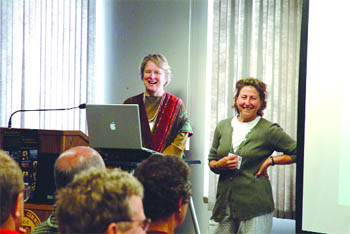
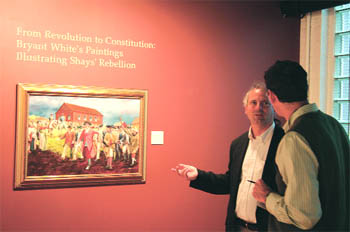
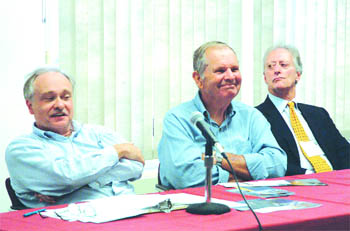
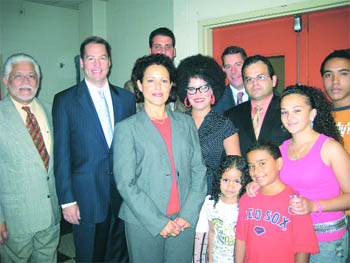
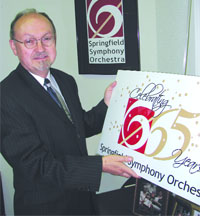

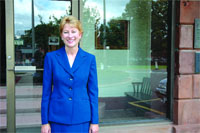
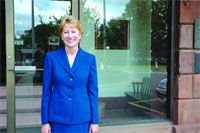
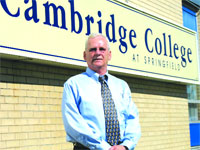

 An App a Day
An App a Day BlackBerry Cordial
BlackBerry Cordial However, this is not to say that design and lifestyle dont still play a part in which phone or accessories are purchased. High-end phones like the BlackBerry and iPhone are larger than some of the tiny devices of years past, and more complicated to replace or repair. Thats why many manufacturers are now striving to offer a multitude of options in terms of capabilities and space for added applications, while still taking into account the varied lifestyles of consumers.
However, this is not to say that design and lifestyle dont still play a part in which phone or accessories are purchased. High-end phones like the BlackBerry and iPhone are larger than some of the tiny devices of years past, and more complicated to replace or repair. Thats why many manufacturers are now striving to offer a multitude of options in terms of capabilities and space for added applications, while still taking into account the varied lifestyles of consumers.


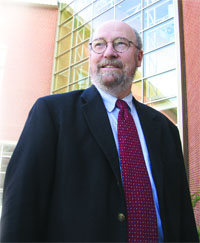
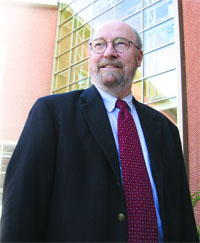

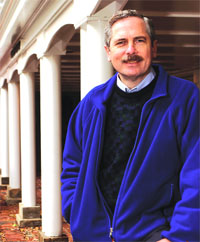
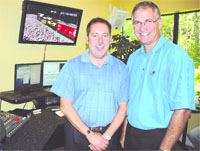
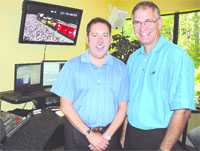
 Carolyne Hannan has been named Vice President of Sales and Marketing for Comcast in Western Mass., Connecticut, and New York. In this role, Hannan will oversee all marketing and sales initiatives in the 128 communities that comprise the region. Hannan has 15 years of experience in the communications industry, including four years with Comcast.
Carolyne Hannan has been named Vice President of Sales and Marketing for Comcast in Western Mass., Connecticut, and New York. In this role, Hannan will oversee all marketing and sales initiatives in the 128 communities that comprise the region. Hannan has 15 years of experience in the communications industry, including four years with Comcast. 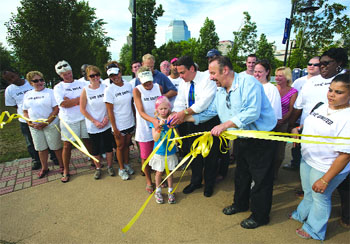




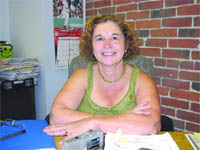
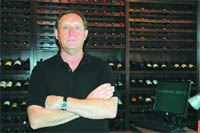
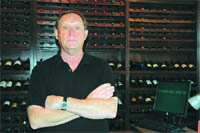

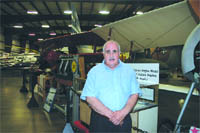
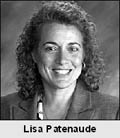 Lisa Patenaude has been named Partner at Meyers Brothers Kalicka in Holyoke. In addition to her work in the Health Care Services Division, she also works with clients in the manufacturing, real-estate, retail, construction, and personal-service industries.
Lisa Patenaude has been named Partner at Meyers Brothers Kalicka in Holyoke. In addition to her work in the Health Care Services Division, she also works with clients in the manufacturing, real-estate, retail, construction, and personal-service industries. 
